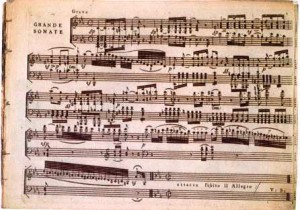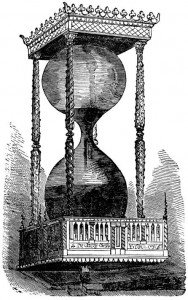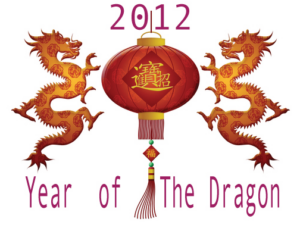 Federal government fails when it comes to enforcing United States race classification laws (Changing the majority)
Federal government fails when it comes to enforcing United States race classification laws (Changing the majority)
Pass research proves little has been done in enforcing the US race classification laws. The law is not are has been a high priority on the government’s list of laws to enforce. With DNA test now available it should make it easer to have specific knowledge of your races and not have to rely on tall tales from grand parents are coded messages left in religious cannons. In most cases those reference only proves what country they were born in or from. To understand why the law is so difficult to enforce, we must understand what the law is, how the law was enacted and when enacted by congress. The mere fact that the government now has the DNA scientific means of verifying race must bring fear to many Americans who believe that they are one race and because of science, now realize that US law could declares them another race.
The Jim Crow law The “One Drop Law” 1927 to 1930 was enacted across the US but mainly in the south. Until the law was enacted it was common that many white-identified ancestors with African blood, including a large percentage of white slave owners. What do you believe the percentages of whites Americans that are aware of African ancestors in their family tree? In 1997mixed Americans were being prostituted under this law in America. Google, Renegade South, Histories of unconventional southerners, The Long Shadow of the Civil War, by Vikki Bynum has some very good information about the “One Drop Law”
“It is also known as the “one black ancestor rule,” some courts have called it the “traceable amount rule,” and anthropologists call it the “hypo-descent rule,” meaning that racially mixed persons are assigned the status of the subordinate group. This definition emerged from the American South to become the nation’s definition, generally accepted by whites and blacks. Blacks had no other choice”. F. James Davis is a retired professor of sociology at Illinois State University. He is the author of numerous books, including “Who is Black? The One Nation’s Definition” (1991)
Will the powers (big money) allow a law declaring everyone to take a DNA test as part of their one all inclusive ID card system? There are lots reasons for passing the law and many objections to it as well.
Now that we have the focus on correcting the racial lines, reclassify all people with African blood as black and only then will justice occur. There is a positive outcome if a DNA law does go into effect, for whites that are  reclassified; they will still be in the majority and therefore need to catch up on their African history by reviewing books like, Dr. Chancellor James Williams an African American sociologist, historian and writer and the author of “The Destruction of Black Civilization” (1971).
reclassified; they will still be in the majority and therefore need to catch up on their African history by reviewing books like, Dr. Chancellor James Williams an African American sociologist, historian and writer and the author of “The Destruction of Black Civilization” (1971).
This is just the start; you will have to read a lot more to find out about your other ancestors. Take a look at the pictures included in the article of Lena Horn and Wentwort Miller; both have back and white ancestors. Ask yourself, if you pass them on the street not knowing who they are, would you know if they were black are white?


 ll, music industry is thriving. The number of albums and songs released each year is growing and new artists appear seemingly on a daily basis. Consequently, musical environment of 2012 is substantially different from that of 1992, at least quantitatively if not qualitatively (in opinions of many people, our two biggest pop stars of today, Lady Gaga and Adele, are somewhat reminiscent of Madonna and Mariah Carey). So, it seems to be good news that all technological innovations led to the positive development of music industry. However, it is not exactly so. While music industry is in good shape, record industry is negatively affected by the ease with which people can access music nowadays.
ll, music industry is thriving. The number of albums and songs released each year is growing and new artists appear seemingly on a daily basis. Consequently, musical environment of 2012 is substantially different from that of 1992, at least quantitatively if not qualitatively (in opinions of many people, our two biggest pop stars of today, Lady Gaga and Adele, are somewhat reminiscent of Madonna and Mariah Carey). So, it seems to be good news that all technological innovations led to the positive development of music industry. However, it is not exactly so. While music industry is in good shape, record industry is negatively affected by the ease with which people can access music nowadays.
 Time and People: How and When We Started Keeping Time
Time and People: How and When We Started Keeping Time
 Ask any adult what they think about riding a motorcycle and you’re likely to get one of two answers—very cool or totally nuts. For those folks that are dedicated “bikers,” no amount of scary stats on accidents, brain injuries, or deaths will convince them to give up their Harleys or Hondas; others are convinced that even a parked motorcycle is lethal. This is a machine that inspires intense feelings, good, bad, and ugly.Today, more people than ever before are riding motorcycles, some estimates put the number at about
Ask any adult what they think about riding a motorcycle and you’re likely to get one of two answers—very cool or totally nuts. For those folks that are dedicated “bikers,” no amount of scary stats on accidents, brain injuries, or deaths will convince them to give up their Harleys or Hondas; others are convinced that even a parked motorcycle is lethal. This is a machine that inspires intense feelings, good, bad, and ugly.Today, more people than ever before are riding motorcycles, some estimates put the number at about  Testosterone, it’s a natural substance with a colorful history and now its synthetic equivalent is a powerful moneymaker for the pharmaceutical industry. The television commercials for testosterone gel are ubiquitous. They go something like this: a middle-aged male, somewhere between ages 46 and 55, can barely drag himself out of bed. He shuffles through his day at the office while the younger men around him appear to skip down the halls. He has no energy for a pick-up game of basketball or handball or tennis. He has no appetite for drinks after work and forget dinner, dancing or sex with the wife. And of course, he’s depressed. Who wouldn’t be? But all it takes is a little testosterone gel and voila, he’ll soon dance the night away, work around the clock, and be a tiger in the bedroom. The Mighty “T” has come out of the illicit steroid trade of sports and into the mainstream of men’s health care.
Testosterone, it’s a natural substance with a colorful history and now its synthetic equivalent is a powerful moneymaker for the pharmaceutical industry. The television commercials for testosterone gel are ubiquitous. They go something like this: a middle-aged male, somewhere between ages 46 and 55, can barely drag himself out of bed. He shuffles through his day at the office while the younger men around him appear to skip down the halls. He has no energy for a pick-up game of basketball or handball or tennis. He has no appetite for drinks after work and forget dinner, dancing or sex with the wife. And of course, he’s depressed. Who wouldn’t be? But all it takes is a little testosterone gel and voila, he’ll soon dance the night away, work around the clock, and be a tiger in the bedroom. The Mighty “T” has come out of the illicit steroid trade of sports and into the mainstream of men’s health care.
 In 1991, the U.S. Congress designated March as an Irish-American heritage month because one of the most popular Irish holidays, St. Patrick’s Day, is celebrated on March 17 every year. The holiday commemorates the death of St. Patrick, the saint patron of Ireland who introduced Christianity to the country in the fifth century. St. Patrick’s Day had been celebrated by Irish people all over the world for more than 1000 years and became very popular in the USA as well. In fact, there are about 40 million people of Irish ancestry living in the USA nowadays, which is almost 8 times the size of the population of the Republic of Ireland of about 4.5 million people.
In 1991, the U.S. Congress designated March as an Irish-American heritage month because one of the most popular Irish holidays, St. Patrick’s Day, is celebrated on March 17 every year. The holiday commemorates the death of St. Patrick, the saint patron of Ireland who introduced Christianity to the country in the fifth century. St. Patrick’s Day had been celebrated by Irish people all over the world for more than 1000 years and became very popular in the USA as well. In fact, there are about 40 million people of Irish ancestry living in the USA nowadays, which is almost 8 times the size of the population of the Republic of Ireland of about 4.5 million people. In the almost forty years since the war in Vietnam ended, the sad image of once proud military men living in alleys and shelters across the country had become familiar along with their grim stories. For most homeless veterans, the path to the street was marked by chronic drug and alcohol abuse often precipitated by PTSD (post traumatic stress disorder) and undiagnosed TBI (traumatic brain injury) that eventually led to loss of jobs, relationships, housing, and dignity. The struggle to assist homeless veterans in the decades between 1965 and 2000 was grim…and then came Iraq, Afghanistan, and Recession.
In the almost forty years since the war in Vietnam ended, the sad image of once proud military men living in alleys and shelters across the country had become familiar along with their grim stories. For most homeless veterans, the path to the street was marked by chronic drug and alcohol abuse often precipitated by PTSD (post traumatic stress disorder) and undiagnosed TBI (traumatic brain injury) that eventually led to loss of jobs, relationships, housing, and dignity. The struggle to assist homeless veterans in the decades between 1965 and 2000 was grim…and then came Iraq, Afghanistan, and Recession. Over time, many different traditions and beliefs emerged surrounding Leap Year. One of the most popular traditions is that women can propose marriage to men on February 29 during Leap Year. As legend asserts, St. Bridget complained to St. Patrick that some women had to wait too long for men to propose and as a result, St. Patrick allowed women to suggest marriage on this particular day. If a man refused, he had to give a woman some present such as silk dress, money, or gloves. Also, in some countries it was believed a bad luck to be married during a Leap Year, while in other countries it was considered unfortunate to be born during Leap Year or on Leap Day in particular. However, the last belief can be easily refuted if one considers that many famous and accomplished people were born during Leap Year or even on Leap Day.
Over time, many different traditions and beliefs emerged surrounding Leap Year. One of the most popular traditions is that women can propose marriage to men on February 29 during Leap Year. As legend asserts, St. Bridget complained to St. Patrick that some women had to wait too long for men to propose and as a result, St. Patrick allowed women to suggest marriage on this particular day. If a man refused, he had to give a woman some present such as silk dress, money, or gloves. Also, in some countries it was believed a bad luck to be married during a Leap Year, while in other countries it was considered unfortunate to be born during Leap Year or on Leap Day in particular. However, the last belief can be easily refuted if one considers that many famous and accomplished people were born during Leap Year or even on Leap Day. Valentine’s Day, celebrated on February 14th each year, is probably one of the most romantic holidays in the world. This is a day when couples demonstrate their love and affection by exchanging thoughtful gifts, sharing romantic dinner, and giving Valentines’ cards to each other. Although some people complain that the holiday became too commercialized and lost its charm as a result of it, for many others Valentine’s Day is still a wonderful occasion to show their appreciation to their loved ones. Where did the tradition to celebrate love on Valentine’s Day come from?
Valentine’s Day, celebrated on February 14th each year, is probably one of the most romantic holidays in the world. This is a day when couples demonstrate their love and affection by exchanging thoughtful gifts, sharing romantic dinner, and giving Valentines’ cards to each other. Although some people complain that the holiday became too commercialized and lost its charm as a result of it, for many others Valentine’s Day is still a wonderful occasion to show their appreciation to their loved ones. Where did the tradition to celebrate love on Valentine’s Day come from? The economic situation in the world, including the USA, has been quite difficult for several years. Many people face unemployment as companies lay off workers or declare a hiring freeze. According to the U.S. Bureau of Labor Statistics, the unemployment rate in December 2011 was 8.5 %, or 13.5 million people in the US were out of work. The numbers were better than those in previous months, which stayed around 9 %. Several analysts attribute the slight drop of the unemployment rate to seasonal hiring during the holiday season.
The economic situation in the world, including the USA, has been quite difficult for several years. Many people face unemployment as companies lay off workers or declare a hiring freeze. According to the U.S. Bureau of Labor Statistics, the unemployment rate in December 2011 was 8.5 %, or 13.5 million people in the US were out of work. The numbers were better than those in previous months, which stayed around 9 %. Several analysts attribute the slight drop of the unemployment rate to seasonal hiring during the holiday season. 2012 is a Year of Black Water Dragon:
2012 is a Year of Black Water Dragon: Christmas is probably the most beloved holiday for millions of people around the world, especially children. While, strictly speaking, it is a religious holiday which celebrates the birth of Jesus Christ, Christmas became a very popular public holiday in both Christian and non-Christian countries as well. Historically, many ancient cultures such as Roman, Mesopotamian, and Scandinavian held mid-winter celebrations long before the advent of Christianity to honor their various gods and enjoy their harvests. However, with the spread of Christianity around the world, church representatives decided to institute the birth of Jesus Christ as an official holiday. In the fourth century, Pope Julius I selected December 25 as a date to celebrate Christmas although it was not established that Jesus Christ was actually born on that date (most people think that Christ was born sometime in spring or summer). It is commonly believed that this particular date was chosen in order to coincide with traditional winter celebrations and consequently encourage more people to observe the holiday. By Middle Ages, Christmas was widely celebrated all over Europe.
Christmas is probably the most beloved holiday for millions of people around the world, especially children. While, strictly speaking, it is a religious holiday which celebrates the birth of Jesus Christ, Christmas became a very popular public holiday in both Christian and non-Christian countries as well. Historically, many ancient cultures such as Roman, Mesopotamian, and Scandinavian held mid-winter celebrations long before the advent of Christianity to honor their various gods and enjoy their harvests. However, with the spread of Christianity around the world, church representatives decided to institute the birth of Jesus Christ as an official holiday. In the fourth century, Pope Julius I selected December 25 as a date to celebrate Christmas although it was not established that Jesus Christ was actually born on that date (most people think that Christ was born sometime in spring or summer). It is commonly believed that this particular date was chosen in order to coincide with traditional winter celebrations and consequently encourage more people to observe the holiday. By Middle Ages, Christmas was widely celebrated all over Europe. Christmas tree, Australians usually have Christmas Bush, a local plant with small red flowers. In Austria, the celebrations start on December 6 when an evil counterpart of Santa known as Krampus punishes naughty and misbehaving children. Nowadays, men dressed in scary costumes run outside and hit people with sticks. In Spain, people take a hollowed log, prop it on four stick “legs,” and paint a face on it. Starting on December 8, the log is continually “fed” some candies, nuts and other treats; and on Christmas Day the log is beaten up with sticks and encouraged to “poop” the treats. Usually, the beating is accompanied by funny traditional songs. This tradition is similar to one in Mexico where on Christmas Day children are given sticks to hit piñatas hung on the rope to get the candies hidden inside. In Great Britain, it is customarily to bake a pudding similar to a fruitcake – but if you want to ensure a happy next year for yourself, you need to partake in preparation of a pudding. Also, there is usually a coin hidden somewhere inside the pudding and good luck is guaranteed to a person who finds it! In Christian Orthodox countries such as Russia and Greece, Christmas Day is celebrated 13 days after December 25, on a day known as a Day of Epiphany. In Japan, traditional Christmas meal is Kentucky Fried Chicken, and it is very difficult to find a place in a KFC restaurant on that day! As for people in Baltic countries such as Finland, Estonia, and Latvia, there is no better treat on a Christmas Day for them than spending some time in hot steamy sauna.
Christmas tree, Australians usually have Christmas Bush, a local plant with small red flowers. In Austria, the celebrations start on December 6 when an evil counterpart of Santa known as Krampus punishes naughty and misbehaving children. Nowadays, men dressed in scary costumes run outside and hit people with sticks. In Spain, people take a hollowed log, prop it on four stick “legs,” and paint a face on it. Starting on December 8, the log is continually “fed” some candies, nuts and other treats; and on Christmas Day the log is beaten up with sticks and encouraged to “poop” the treats. Usually, the beating is accompanied by funny traditional songs. This tradition is similar to one in Mexico where on Christmas Day children are given sticks to hit piñatas hung on the rope to get the candies hidden inside. In Great Britain, it is customarily to bake a pudding similar to a fruitcake – but if you want to ensure a happy next year for yourself, you need to partake in preparation of a pudding. Also, there is usually a coin hidden somewhere inside the pudding and good luck is guaranteed to a person who finds it! In Christian Orthodox countries such as Russia and Greece, Christmas Day is celebrated 13 days after December 25, on a day known as a Day of Epiphany. In Japan, traditional Christmas meal is Kentucky Fried Chicken, and it is very difficult to find a place in a KFC restaurant on that day! As for people in Baltic countries such as Finland, Estonia, and Latvia, there is no better treat on a Christmas Day for them than spending some time in hot steamy sauna.
 Underage Drinking During Holidays:
Underage Drinking During Holidays:
